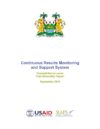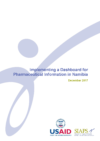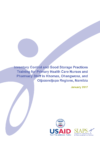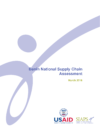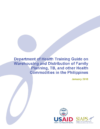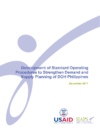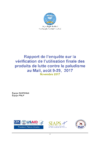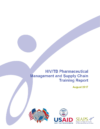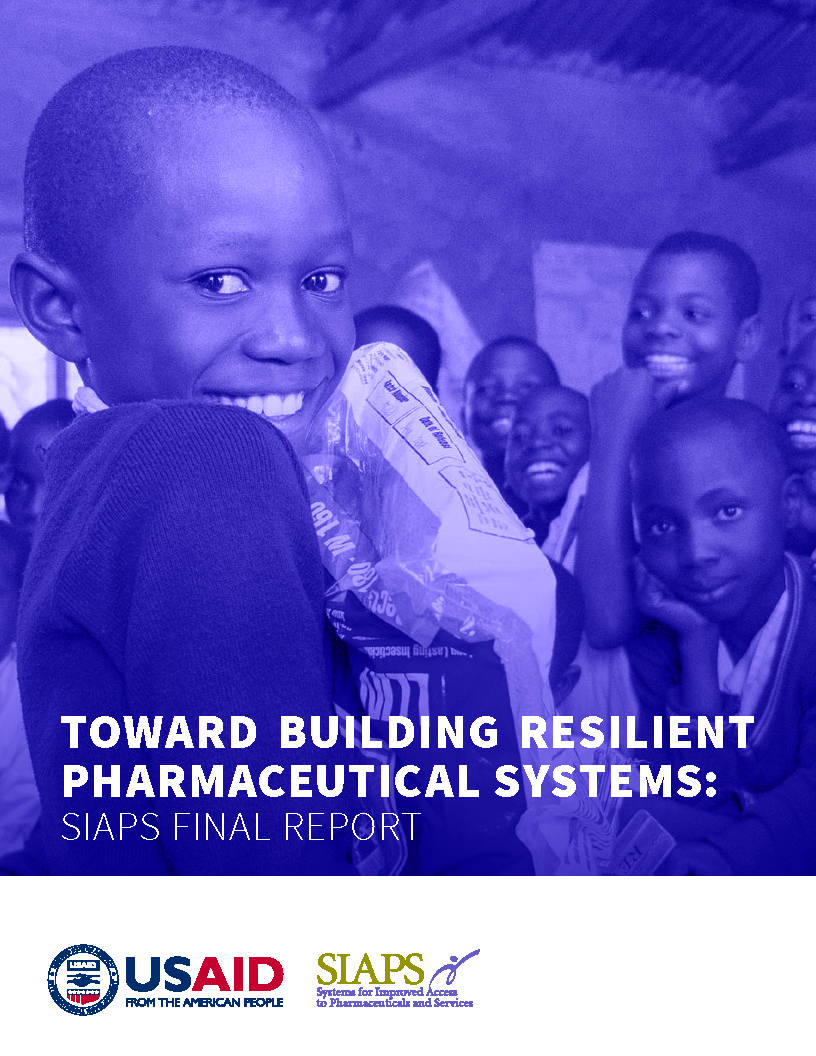This is the report of the first continuous results monitoring and support system (CRMS) exercise in Bombali District, which was conducted in May 2016. The purpose of the report is to highlight the findings and observations of the CRMS exercise. A total of 104 health facilities (HFs) (one hospital, 18 community health centers (CHCs), 57 … Read more
SIAPS supported the MoHSS to design and implement a web-based electronic information system (dashboard) for both patient and stock status in Namibia. It was designed to improve coordination among facility, district, regional, and national stakeholders involved in HIV commodity management; increase the use of pharmaceutical information for management decision making at all levels of health … Read more
B Phulu, D Mabirizi, E Sagwa, EDT, G Mazibuko, HIV/AIDS, HR Kagoya, Logistics Management Information System, Namibia, S Mwinga, Technical Report
Although SIAPS introduced a number of automated inventory control tools, such as the Facility Electronic Stock Card (FESC) and Electronic Dispensing Tool (EDT) for district hospitals, since June 2015, at the primary health care (PHC) level, inventory control and storage practice are a major challenge and the major cause of stock-out of medicines for antiretroviral … Read more
In an effort to improve the health status of the Beninese population, a priority activity included in the 2015 convention between the US Government, represented by USAID, and the Benin Government, represented by the Ministry of Health (MOH), was to conduct a comprehensive assessment of the public health supply chain, focused on essential medicines that … Read more
A Gbaguidi, Benin, E Nfor, Human Resource Management, L Maxim, M Levenger, Pharmacovigilance, Procurement, Quantification, S Conesa, Supply chain management, Technical Report
This guide is written for the DOH Philippines’ LMD. It can be used as support material in the training and development of new and existing staff involved in warehouse and distribution operations at all levels, particularly those who are involved in the process of receiving, putaway and storing, picking and packing, and dispatching of FP, … Read more
In line with the objective of the Department of Health (DOH) to strengthen supply chain management for pharmaceuticals and health commodities and ensure access for all Filipinos, this technical assistance aimed to support the DOH in strengthening demand and supply planning for pharmaceuticals. The assistance aimed to facilitate consensus building to harmonize demand and supply … Read more
La présente édition de l’EUV a été réalisée août 9-29, 2017, sous la direction du PNLP dans les régions du sud du Mali. L’objectif de l’étude est de contribuer à améliorer la disponibilité, la gestion, et l’utilisation des médicaments et autres intrants antipaludiques dans les structures sanitaires publiques et parapubliques du Mali. C’est une étude … Read more
Yousef Makar is the Chief Pharmacist at the Windhoek Central Hospital, Namibia’s national referral hospital for specialised health care services for the past five years. Before July 2016, Yousef and other pharmacy managers in government health facilities faced huge challenges in managing the inventory of pharmaceuticals with frequent stock-outs of key pharmaceuticals because consumption information … Read more
By Francis Aboagye-Nyame, SIAPS program director Greatjoy Mazibuko was a pharmacist at the Oshakati Intermediate Hospital in Namibia working with ART patients. Every day, he rose at dawn, not knowing how many patients he would have that day. He often worked for 12 hours or more; patients were kept waiting for hours, perhaps having traveled … Read more
According to the World Health Organization, many countries spend 30–40% of their health care budgets on medicines and medical commodities, and a significant amount of the funds are wasted because of irrational medicines use and inefficiencies in stock management due to lack of skills. Other serious problems that health care organizations face include the overuse … Read more
